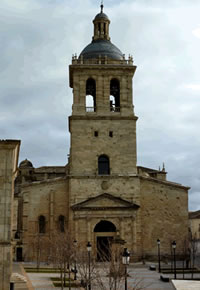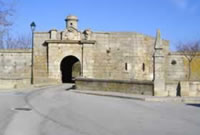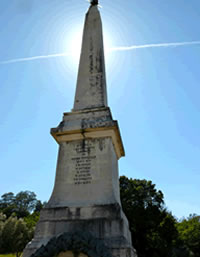Lynne Booker
THE PENINSULAR WAR PART 4: FROM TALAVERA TO BUSSACO The battle of Talavera - who won? Although the French had lost more men and they had left the battlefield first, on the other hand, they had stopped the allied Spanish and British forces from marching on Madrid and Wellesley himself was soon forced to withdraw from the battlefield to avoid being trapped between two superior French armies.
He had lost over 25% of his British force, a huge proportion. As his army moved off to face the threat to his rear, he was forced to leave his 1500 wounded to the care of Spanish General Cuesta under the scorching Spanish July sun. But Britain was badly in need of a victory, and they chalked up Talavera as a victory anyway, and Wellesley earned his first title in the peerage as a consequence (he became in September 1809 Viscount Wellington of Talavera).
´…… to my mind the cause is hopeless……´ said General Hill, one of Welllington´s most steadfast lieutenants. He was referring not only to Talavera but to the whole Peninsular campaign. He reasoned that the Spanish had proved themselves unsteady allies on the battlefield; that the French army with blitzkrieg style successes throughout Europe had great self-belief and was difficult to beat; and that the Portuguese soldier, according to one particular British general, was .... ´naturally indolent´. Their favourite word was ´vamos ´(let´s go) which during the Peninsular War passed into the English language as vamoose, meaning to clear out. In England, Portland´s government was under great pressure in the face of the immense cost of keeping the army in the Peninsula with very little to show for it. Wellington confidently wrote to the Minister of War that, in the long term, the French army would fail. Their supply system was totally unsuitable for the type of war they had to fight in the Peninsula. `I am positively in no scrape; and if this country can be saved, we shall save it,´he wrote.
The Spaniards might not cope well in set piece battles, but they were stalwart in defending their towns and cities and their guerrilla warfare in the Spanish countryside tied down hundreds of thousands of French in garrison and despatch duties. In the future Wellington would rely on Portuguese troops already shaping well under the training of the British Marshal Beresford.
A game of shadows
After the battle, neither the Allies nor the French had received accurate intelligence about the other side. In the belief that the Allies had more troops than in fact they had, the French continued to retreat eastwards. Wellington and the Spanish Commander-in-Chief, Cuesta, had planned to continue their advance towards Madrid, but on the evening of 1 August Wellington received news that a strong French force under Marshal Soult had entered Bejar 50 miles north east of Plasencia. They had driven back the Spanish covering force and now threatened Wellington´s line of retreat to Portugal. Wellington set off to meet this new threat at Plasencia but as he reached Oropesa he was shocked to learn that Soult´s force was not the 15,000 troops that he expected and could deal with but nearer 50,000, double the size of Wellington´s reduced army. Instead of withdrawing due west to Portugal, the British had to cross the river Tagus and withdraw southwestwards towards Badajoz and Elvas ahead of the pursuing French. His exhausted army, still on half rations, raced to the nearest river crossing at Arzobispo, beating the French cavalry to it by a short head.
Holding on
In a gesture of support to his Spanish allies, Wellington´s small army guarded the river crossing for a further 2 weeks. Hunger, dysentry and fever had reduced men and horses to bags of bones and according to Commissary Schaumann, ´the soldiers´wives - usually decently clad and faithful to their husbands - went round on starved donkeys offering themselves to anyone for half a loaf´. But after Venegas´ Spanish force had ben routed at Almonacid south of Toledo, there was no further reason for the British to remain in Spain, nor indeed was the army in any fit state to do so. On 21 August the troops continued their retreat southwestwards towards the Portuguese frontier where they could be supplied from Elvas and Lisbon. Although Wellington agreed to stay in the unhealthy Guadiana valley to offer support to Cuesta for a time, he would not risk his remaining troops again in Spain. He had lost a third of them in the Talavera campaign, partly through lack of provisions, and he did not plan to lose any more of his small and precious army as a result of empty Spanish promises to supply adequate provisions.
The French eagle and the English lion
At the age of 40, Napoleon looked like ´the very incarnation of success. ´as a contemporary described him. He had conquered Italy and half of Germany and filled the thrones of Spain, Holland, Westphalia and Naples with members of his family. He had divorced his barren wife Josephine and married the Hapsburg Archduchess Marie-Louise (ironically, she was the niece of Marie Antoinette, the Queen of France who was guillotined in 1793). He had planned to take direct command of the armies in Spain, but instead chose to enjoy his wedding celebrations and to found his new dynasty. He thought of the war in Spain more of an irritant than life threatening. Eleven weeks older than the Corsican, the Anglo-Irish Wellington had been in the army for 24 years. Wealthy from his Indian campaigns and brother to Cabinet Minister the Marquess Wellesley, he had risen rapidly through the ranks, to the chagrin and envy of others less well connected. He too was married to a wife (Kitty Pakenham) with whom he had rapidly lost patience. Wellington convinced the Cabinet that even if Napoleon could hold Spain militarily, he would not be able conquer Portugal provided that Lisbon was properly defended. Secretly, from October 1809 onwards, Wellington ordered a colossal system of entrenchments and forts stretching from the Atlantic to the river Tagus to the north of Lisbon. This immense fortification has come to be known as The Lines of Torres Vedras. Behind the Lines, the British and Portuguese defenders would be supplied by the Royal Navy. Wellington´s strategy was to lure the French towards the Lines, first ensuring that there was no food available locally to the French army (a scorched earth policy) and destroying any roads that would be useful to the invader. Secondarily, he ordered the reinforcement of a string of strongpoints through Portugal at Almeida, Abrantes, Peniche and Elvas, to be manned by 48 Portuguese militia regiments who could threaten the French from the rear. Similarly, over the border Spanish guerrillas were to harass units of the French army wherever and whenever they could.
The Light Division
For the first half of 1810 Wellington was chiefly concerned to rest his troops and to consolidate his forces. The Light Division under General Robert (Black Bob) Craufurd guarded the entry into Portugal over a 50 mile line between the River Douro and the Sierra de Gata. The French Army of Portugal under Marshal André Masséna began their campaign at Ciudad Rodrigo at the beginning of June, 1810. Wellington was fiercely criticised for not going to the aid of the city, but he would not fight the greater French force on ground of their own choosing. Ciudad Rodrigo surrendered on 10 July, and three days later the French juggernaut moved towards the border.
Wellington knew that he could not win a battle in open country and ordered Crauford´s division to fall back to a position with his left near the fortress of Almeida and his right on the River Côa. On no account was he to engage superior French forces. On 24 July, Craufurd and his troops were retiring too leisurely and were attacked by French cavalry, only just managing to escape over the one very narrow bridge. Wellington was furious and Craufurd was lucky not to be dismissed from his command! Wellington was usually supportive of pugnacity in his officers, and reckoned that Craufurd had merely misjudged the speed of his withdrawal.
 Fireworks at Almeida
Fireworks at Almeida
Almeida was well supplied and armed, and isolated as it was, it was capable of holding out for months even against the mighty force now opposed to it. Almeida was one of the best built border fortresses in Portugal, guarding the route into Portugal from Salamanca and Ciudad Rodrigo. Its 5,000 defenders were commanded by the British Brigadier William Cox who had at his disposal 96 artillery pieces. Cox of course refused to surrender the fortress when called on by the French, and they moved their siege artillery up from Ciudad Rodrigo which had fallen only 15 days previously. Unfortunately, Cox did not get a chance to test the spirit and resolution of the French. On 27 July, the 3rd day of the siege, a French shell ignited spilt powder which in turn ignited the powder magazine and there was an enormous explosion which sent the castle, the cathedral, a half of the town and 700 Portuguese and British soldiers sky high. Even in the face of this calamity, Cox refused to surrender but Portuguese officers asked for terms and the people of the town demanded that the fortress be surrendered. The senior Portuguese officer was later tried at court-martial in Lisbon and executed for his part in this surrender.
The Marshal and the captain
Napoleon, busy with his new wife, had entrusted command in the Peninsula to an unwilling Marshal Masséna. At the age of 52, Masséna had grown used to a life of ease and luxury, and it is possible that his state of mind was connected with the hunting accident in which Napoleon himself had shot out one of Masséna´s eyes. Although his corps commanders initially welcomed his appointment, they soon saw that he had lost the drive and energy necessary to win this tough campaign and the resulting lack of trust between the top commanders of the French army caused weaknesses fatal to its success. Masséna brought along his mistress, who was usually dressed in her husband´s uniform of dragoon captain. On at least one occasion, his attention to her rather than to the military matter in hand caused defeat for his army. Folllowing his unexpected success at Almeida, Masséna reorganised his troops and advanced towards Coimbra. Of the three possible routes (via Viseu, or via Abrantes and Tomar or via the Mondego valley), Masséna chose the worst possible - the right bank of the Mondego valley. Against the advice of his senior commanders, he pushed further on down the river valley, as the allies retired towards the crest of the Bussaco ridge. Wellington had planned to withdraw to Lisbon without fighting but he appreciated that Perceval´s weak government in London would not be able to withstand public pressure for a complete withdrawal from Portugal if his army appeared to be retreating. Wellington therefore resolved to provide a necessary victory to his harassed Prime Minister.
French column against allied line
The steeply sided ridge at Bussaco stretches 9 miles northwards from the River Mondego. At one point it is 1800 feet high with the northeastern face being so steep that one elderly British colonel had to be carried up in a blanket by four of his sergeants. By 26 September the Allies were ready and waiting. Masséna had 65,000 troops under his command and he believed (wrongly) that there were only 20,000 British troops at Bussaco and (again wrongly) that Portuguese soldiers would not fight. In actual fact Wellington had on the ridge 27, 412 British and German troops and 24, 862 Portuguese. Proudly ignoring advice to work around to the north of this immense natural obstacle, and failing to order any reconnaissance whatever, Masséna visited the front line on the afternoon of 26 September, and peremptorily ordered an attack on the ridge for dawn the next day. Then he went back to bed with his ´dragoon captain´.
On the misty morning of 27 September, two dense French columns staggered up the steep slope to be met by a barrage of fire from the British and Portuguese infantry formed in line. Ney, believing that Reynier´s troops had gained the summit, prematurely sent off his 6th Corps in a third column attack. It too was met by volleys of musket fire and the bayonet attacks of the 43rd and 52nd infantry, the latter keen to avenge the death of Sir John Moore at Corunna. Each and every French attack was met with heavy fire and each and every attack was repulsed and thrown back down the hill. Masséna made no further attempt on the allied position at Bussaco. He had employed 40,000 infantry and lost over 4,000 of them, whereas the allies had about 1,000 casualties. The Portuguese Divisions were elated at this their first and triumphant encounter against the French. Masséna´s generals were not happy. They agreed with Napoleon´s later view: ´Why the devil did Masséna thrust himself into that muddle at Bussaco? Even in flat country, columns do not break through lines unless they are supported by superior artillery fire´.
The Lines of Torres Vedras
Realising that his position was being turned, Wellington withdrew his army to the safety of the recently completed Lines of Torres Vedras. His whole army was inside the lines by 10 October. The story of the French defeat by hunger and their inability to breach the Lines belongs to part 5 of the saga of the Peninsular War.
